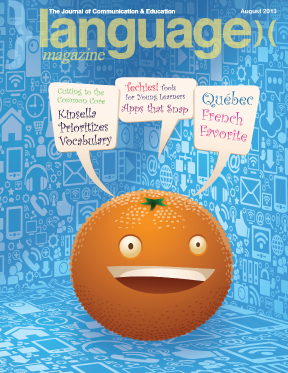Tools Not a Trade
There’s no doubt that computing technology offers a wealth of opportunities for education which are already starting to improve and expand student experiences. However, we would be foolish to presume that delivery devices will fundamentally change the way we learn.
Education of a diverse population, even in a developed economy, is a tall order — the U.S. is struggling to close the achievement gap between its poor minorities and the privileged. But imagine how a country like India, with almost 400 million schoolchildren, is gasping for solutions. The promise of being able to offer every child an individualized learning solution through online programs is tempting.
In the language-learning sector, we have more experience of technology than any other discipline — we were the early adopters — we have had language labs since the 1960s, and we know that they can be incredibly useful but they have limitations. What we have learned is that without the direction and leadership a good teacher can offer, many students get frustrated and lose their motivation. Sure, there are some students who have the single-minded vision to get on with it and learn without the triggers for which most of us yearn. But, generally, we need the interaction with teachers, parents, and peers to advance.
That’s presuming that students have the computing skills to fulfill demands. I spend an inordinate amount of time tutoring my children on their devices — iPad, Kindle Fire, LeapPad, iPhone — I’m learning all the time, and they teach each other. I’m lucky that I have the time and knowledge to do it, but I’ll soon reach a point where I can’t help them anymore.
At that point, I’ll expect their public school teachers to take over and show them how they can learn by themselves. But what about the kids in their classes who haven’t had the privilege of a high-speed internet connection, or the kinesthetic learners, or the kids who need to sing to make their voices heard?
Technology has changed our world for the better, and its possibilities in education are endless. To deny a child access to the wealth of information technology provides is akin to burning books. So we have a responsibility to ensure that all sectors of our societies have access to our common resources. The FCC is currently pushing through its ConnectED effort to give teachers new tools to tailor learning to students’ individual needs. Students — especially those in rural and geographically isolated communities — will have access to a previously unattainable world of resources, experts, and experiences. And families will be more closely connected with their children’s schools and schoolwork.
All of this is great, but, without a qualified teacher to guide students through the morass of information, troubleshoot the quirks of their devices, and point them in the right direction, they will battle with frustration, disappointment, and disconnect. Technology alone will not relieve us of our responsibility to educate, but it does offer us enormous opportunities to create learning experiences that engage all students. It is still up to teachers to inform, guide, and encourage.
IN THIS ISSUE:
Cutting to the Common Core
Making Vocabulary Number One
Dr. Kate Kinsella offers strategies for prioritizing vocabulary for competent text analysis, discussion, and constructed response
Child’s Play
Kennedy Schultz surveys language learning and technology programs for elementary students
Apps That Snap and Tools That Rule
Christopher DiStasio recommends free online resources for the language classroom
A Country of Many Canadas
Learning French in Canada has never been easier, and the quality has never been better
Reviews Lebanese Expressed
Last Writes
Richard Lederer gives us a snicker over ‘sniglets’



